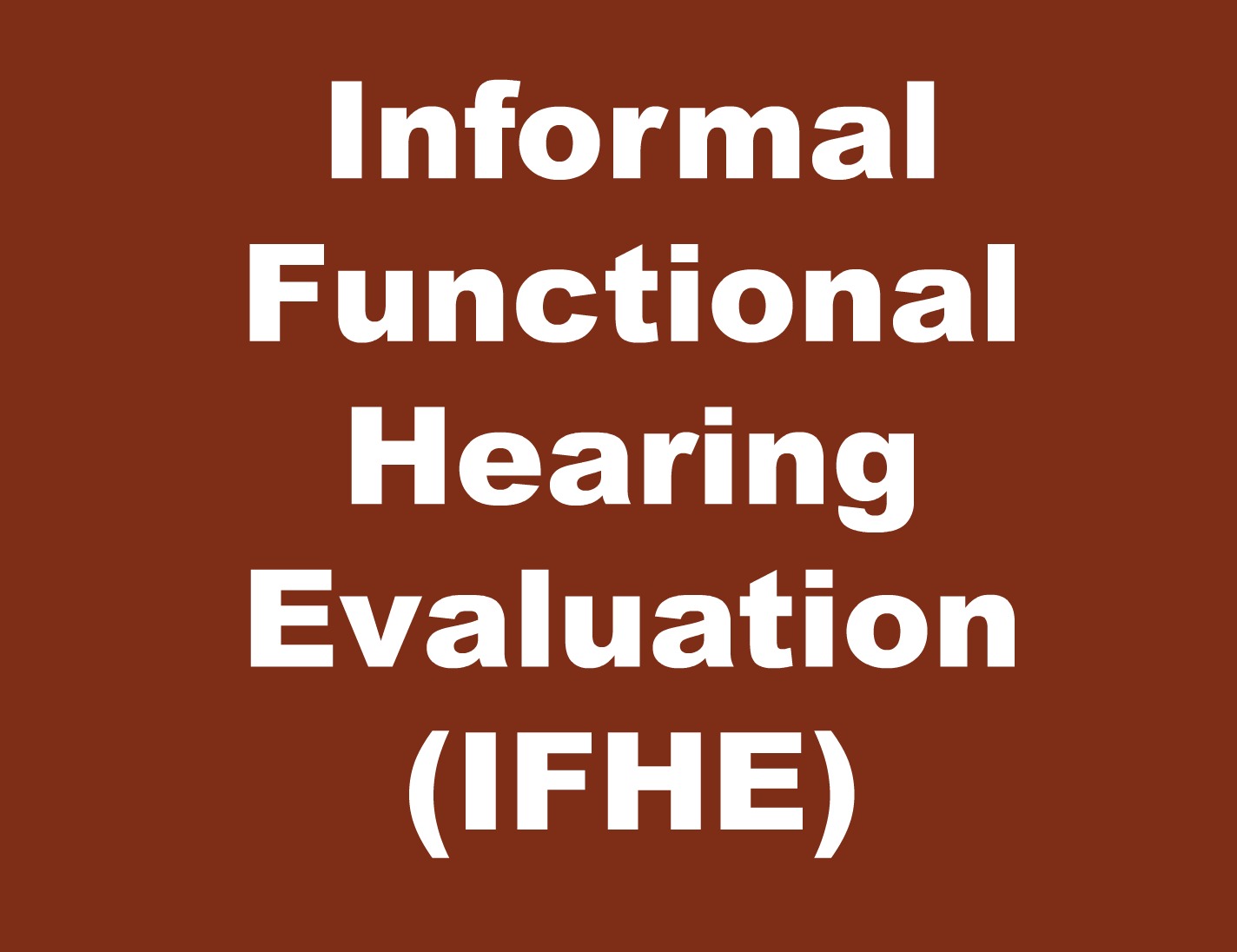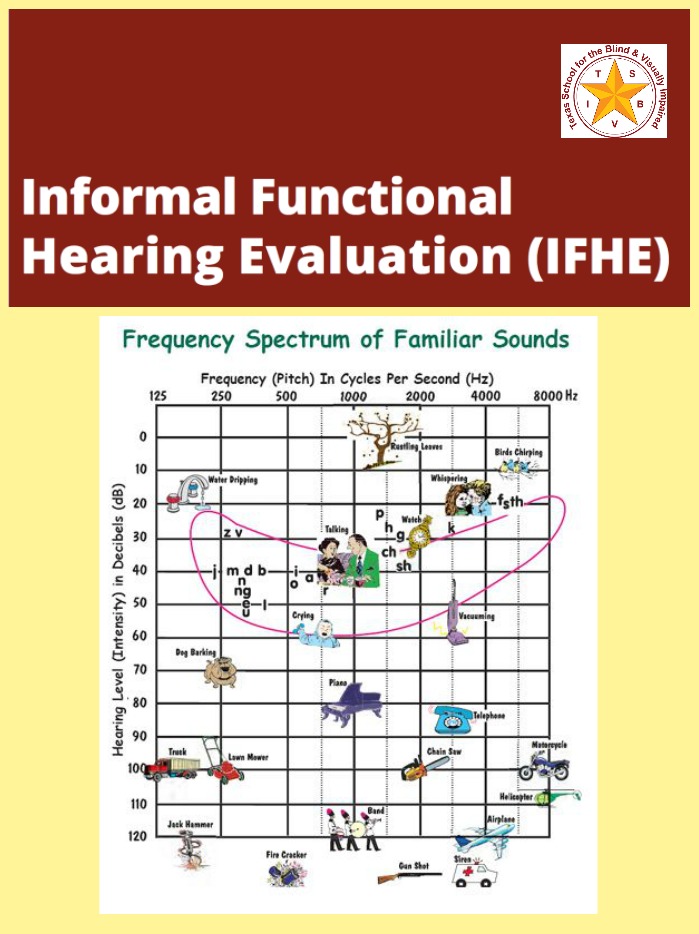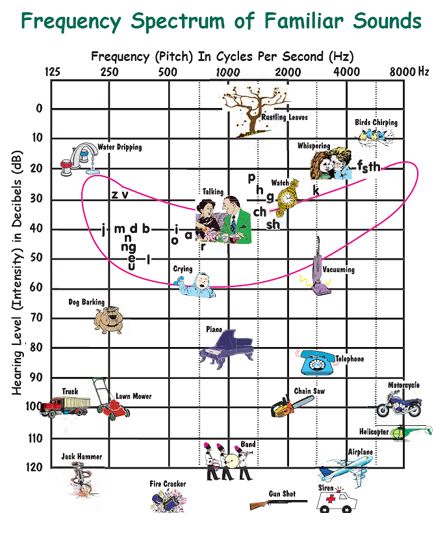
Informal Functional Hearing Evaluation (IFHE)
Overview of the Informal Functional Hearing Evaluation (IFHE), which is designed to help determine the impact of a potential hearing loss
The Informal Functional Hearing Evaluation (IFHE) is an informal evaluation designed to guide a Teacher of the Deaf/Hard of Hearing (TDHH), Teacher of the Deafblind (TDB), Teacher of the Visually Impaired (TVI), Speech Pathologist, or Educational Audiologist in determining the impact of a potential hearing loss on educational functioning for students with visual impairments and multiple disabilities. Developed by Adam Graves and Chris Montgomery from the Deafblind Outreach Program at Texas School for the Blind and Visually Impaired (TSBVI), it is available for free through the National Center on Deaf-Blindness (NCDB).
What is the purpose of the IFHE?
It is important to note that the IFHE is NOT designed to be the sole source of evaluation and is not a substitute for formal hearing testing.
- to provide information about how the child is currently using his/her hearing in a variety of settings
- to guide the Individualized Education Program (IEP) team in developing instructional strategies to address the child’s dual sensory needs.
- to document concerns when a student is unable to participate in formal testing
- to shape programming considerations for a student with deafblindness.
- to serve as a guide for determining what accommodations are needed in the classroom, home, and community environments to promote student access to information.
- to provide valuable information to the audiologist or ENT prior to formal testing.
The Deafblind Difference
According to Adam Graves, “the IFHE is specifically designed to account for the difficulties that students with deafblindness and multiple disabilities have in localizing and identifying sound sources due to their loss of vision. More emphasis is placed on encouraging the teacher of the deaf and hard of hearing to observe and document the child’s specific bodily behavioral responses to sounds. The IFHE places an increased emphasis on observing behaviors other than visual attention to help confirm that a student has heard, recognized, or understood a specific sound, even for students with some vision.” Read more.
Functional Hearing
The results of a formal hearing test do not necessarily correspond to an individual’s ability to understand what sounds mean or to localize them, and this is especially true for students who are deafblind. When sounds have no meaning, one becomes habituated to them rather than learning to attend to them or localize them. For students who do not attach meaning to sounds, auditory training may be helpful.
The chart below shows familiar sounds that can be heard at particular frequencies (pitch) and decibels. Sounds include rustling leaves and birds chirping all the way up to a motorcyle and siren. Note the banana shape where the speech sounds are found.
What is the process for completing the IFHE?
There are three components to the process of completing the IFHE:
- Interviews with parents, staff, and the medical team
- Natural observation in familiar environments during familiar activities
- Systematic observation
Summarizing the Results


